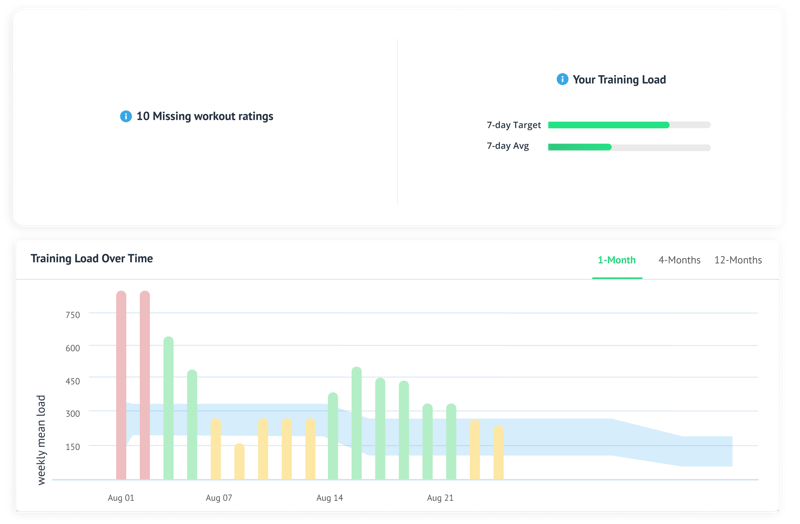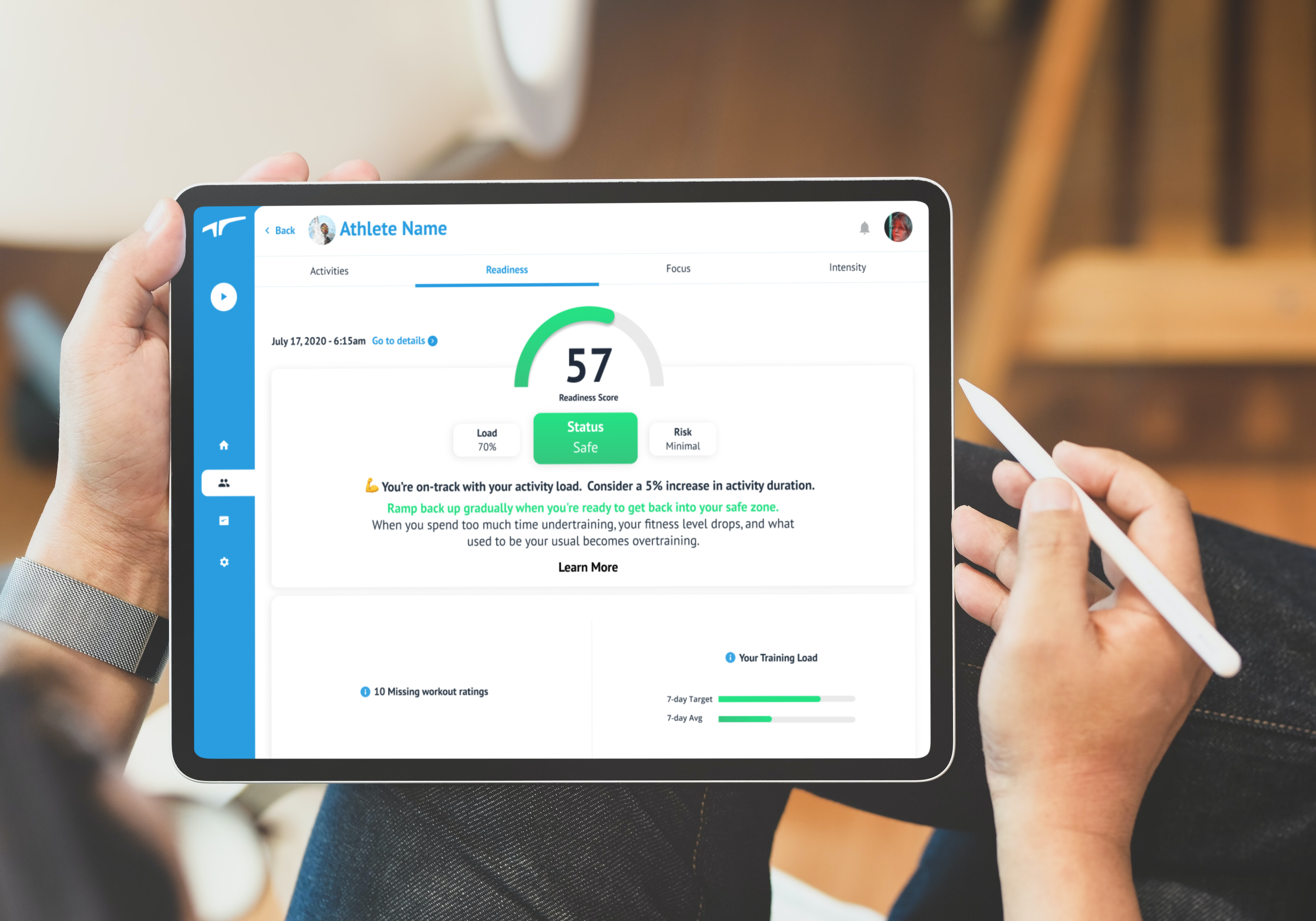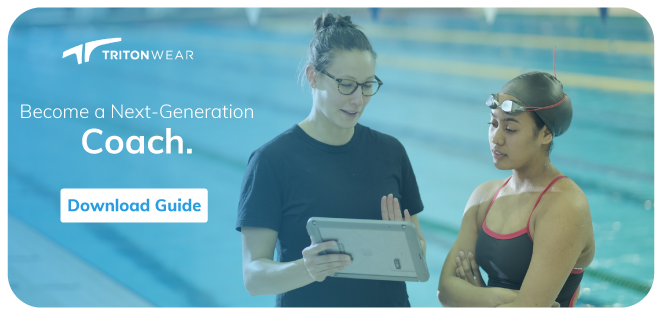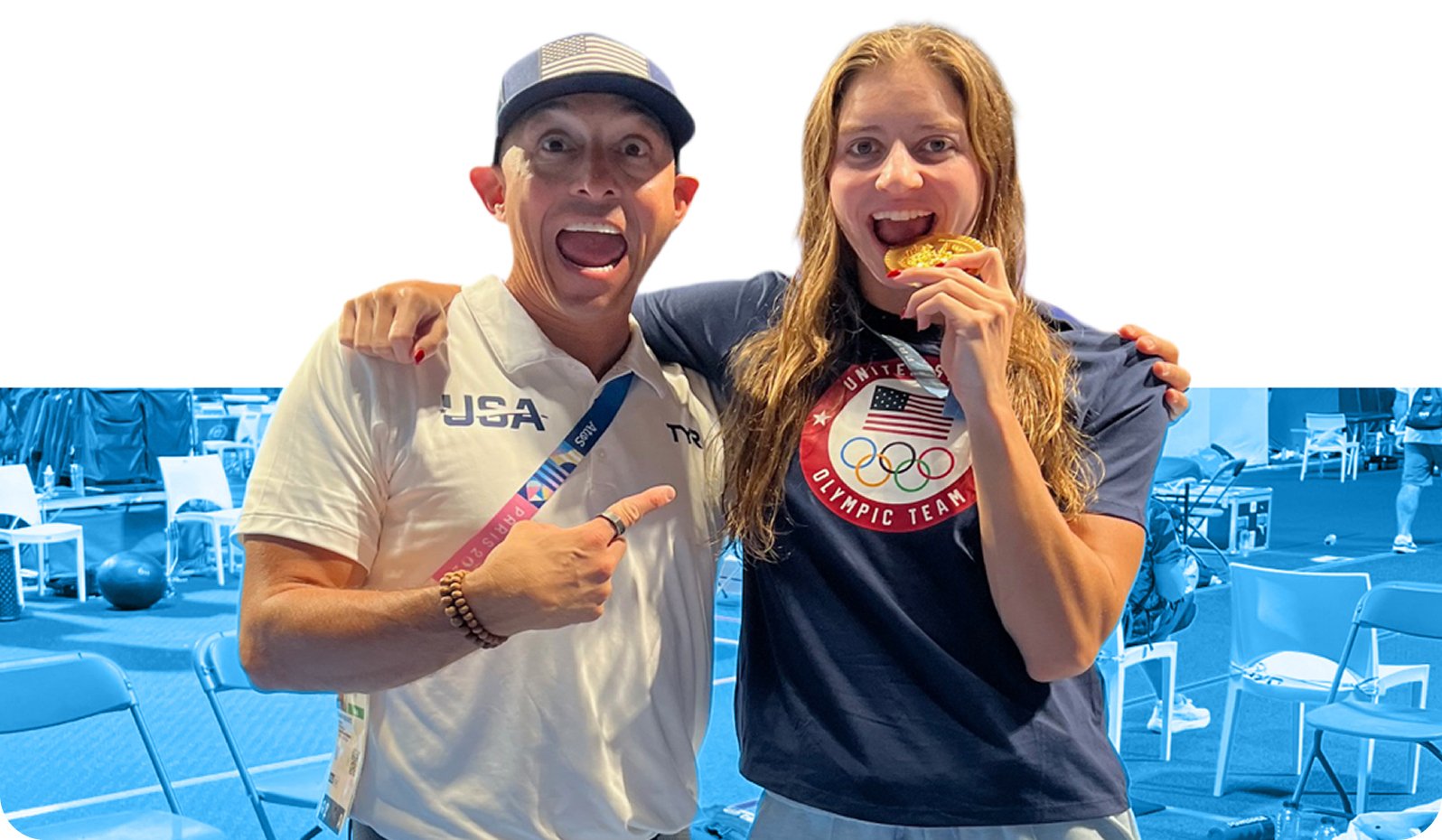TritonWear uses AI to create a profile on your swimmers' past training trends. The Readiness Score is calculated for every workout using load monitoring principles. The score gives an overview of your swimmers' readiness to perform. In addition, we track load change over time and give you their training status and injury risk.
How TritonWear Measures Readiness
TritonWear's Readiness uses the well-established Sports Science concept of ACWR (Acute to Chronic Workload Ratio).
The ratio itself is calculated by dividing the total workload from the last 7 days (fatigue) by the chronic workload for the past 28 days (fitness). TritonWear's AI creates a profile of how an athlete usually swims and combines workout ratings, given by the swimmer, with volume and intensity to determine an their load and recommend how to stay performance ready.
What Readiness Insights Does TritonWear Show?

Load
The load percentage shown above is not the workout load but a percentage comparing the total load from the last 7 days (fatigue) to the load the swimmer is generally used to according to the workouts tracked in the last 28 days (fitness). A 100% percent load means that the swimmer has done exactly the same amount of work in the past week as they usually do. As a Coach, you should gradually increase the load and ideally target 115%.
It's important to remember that Load scores take some time to calculate, you will begin to see some scores after a week, but the athlete's full Readiness score and Load will not be available until 28 days after the first recorded workout.
Status
TritonWear automates load monitoring and alerts you of the status of your athletes' training. Are they over-training, under-training or training safely? Based on their load and daily goals, you’ll know their training status and receive recommendations for adjusting training to keep them safe.
Risk
Research shows that athletes who maintain an Acute to Chronic Workload Ratio (ACWR) between 0.8-1.3% will keep their likelihood of injury below 5%. Injury risk is calculated from your athletes' Workout Rating (RPE) and training load.
Workout Rating
Workout Rating (Rating of Perceived Exertion) is a method of measuring how intense practice felt for your swimmers. The rating is recorded manually by each swimmer after every tracked workout. It is important that they are accurate in their rating, as their rating is a big component of the load calculation.
Training Load Over Time Graph
This graph showcases swim training load values from workouts in the past 1,4 and 12 months. Each bar is a day, which may contain one or more activities. If no tracked activities occurred on a given day, then the score is blank that day. The colours of the bar are reflections of how the load changed in the last 7 days compared to the last 28 days.
The red bars represent over 1.5 change in load (based on ACWTR).
While the yellow bars represent change in load less than 0.8 or between 1.3 and 1.5.
Finally, the green bars represent the optimal change in load, which is anything between 0.8 and 1.3.
Training Load Over Time is a planning tool and a great visual for your ''load mountain'' (how you load and unload training). When making Readiness decisions, you should not make radical changes on the spot. It takes days for load to recover, so if you find yourself over or under-training, try small incremental changes to get back to the sweet spot.

What impacts Readiness?
Keeping your swimmers well recovered and ready to perform will positively influence their workout rating. If you don’t support their recovery, they’ll feel sore, and workouts will feel a lot harder to tackle.
1. Training Habits
The best thing you can do to get your athletes ready for practice is to help them adopt habits that support recovery and injury prevention.
A good warm-up. An excellent dynamic warm-up will prime the body for additional workload. As a result, your swimmers will be able to work longer and harder.
A cool down. An active cooldown will ensure they gradually reduce effort.
Technique. Stay on their case regarding their form in the water. Your athletes will need to avoid swimming with a flat body as this limits the rotation of their shoulder along the spine’s axis. Body rotation can significantly reduce the risk of shoulder injuries.
An active recovery workout. If their status recommendations show they’re overtraining while also feeling sore, try prescribing them an active recovery workout. A light activity the following day will help reduce lactic acid buildup and muscle soreness.
2. Sleep
Educate your athletes on the importance of good quality and quantity of sleep. Sleep can help maximize muscle growth and improve performance. In addition, many essential bodily functions happen during sleep, including storing blood glucose as muscle glycogen and producing the human growth hormone to support muscle growth and recovery.
3. Nutrition
Nutrition is equally valuable for performance as much as recovery is. Failure to replenish fluids and fuel their body can quickly result in sore muscles, fatigue and underperformance.
How to use food for recovery? First off, swimmers need to stay hydrated during practice. Water flushes toxins out of the body, transports nutrients and helps with recovery. Then, within 30 minutes post-activity, they will need to eat to refuel. A few good choices for post-workout snacks are bananas, nuts, or a protein-fueled drink. Nutritional recovery can help with your athletes' Readiness for the following practice and between races.
Why tracking all workouts is essential?
Tracking all workouts will help keep your athletes accountable for their training goals. Their Readiness, along with their nutrition, sleep, and emotional state, will mean you have all the information you need to establish patterns and modify your training. Interpreting how each score interacts with one another and impacts the Triton Score will offer insights to drive your focus and direction. Lastly, tracking Readiness will help keep you on track with the right workload increase to improve athlete performance and minimize the risk of injury.
Learn more: Breaking Down Good and Bad Readiness Score.
If you see yourself as a coach with a growth mindset, someone who is ready to take coaching to the next level, grab this playbook; it's step-by-step guidance to help you integrate data into your training.






.png)

.png)